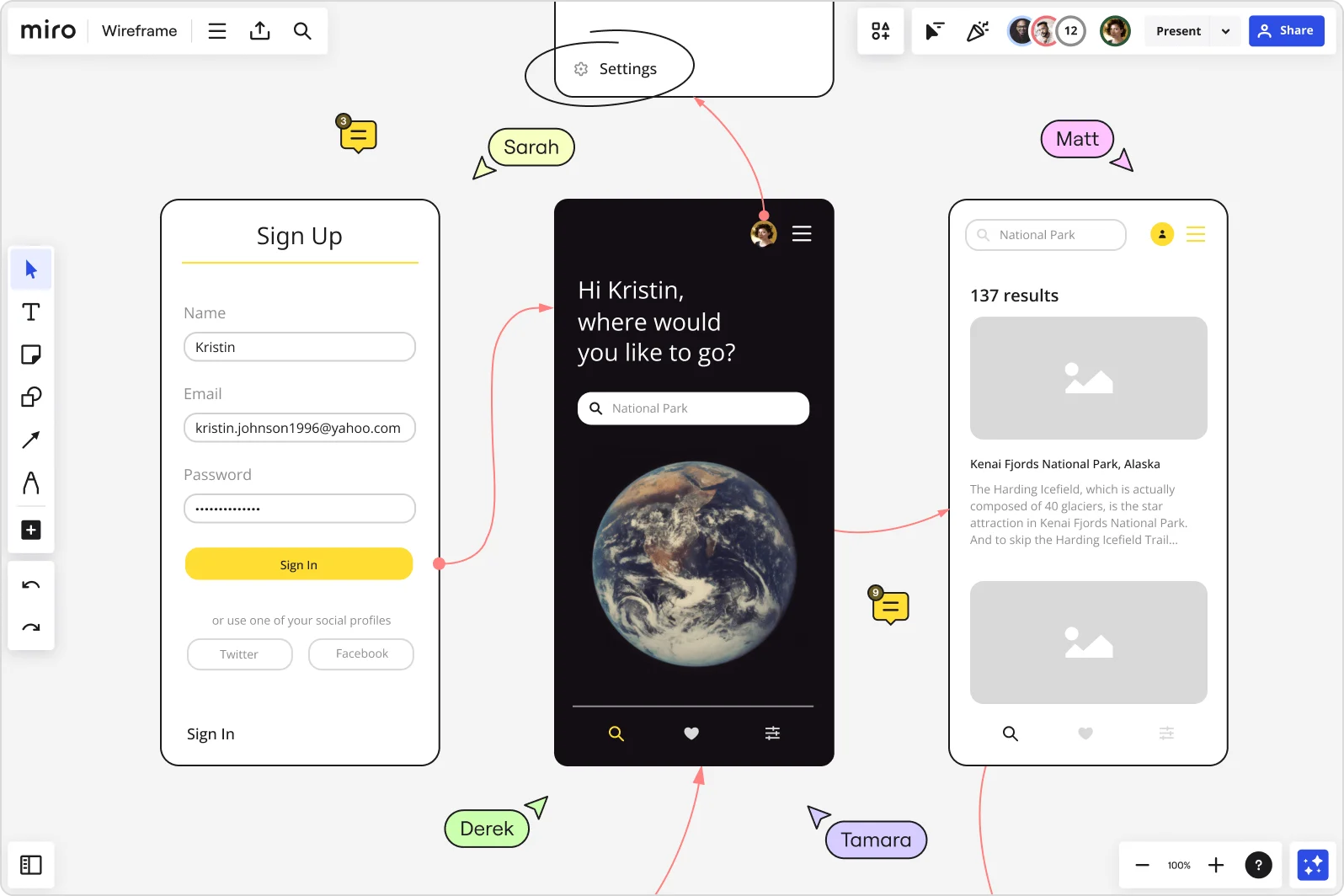
Wireframe vs. UI design

What's the deal with wireframes and UI design?
Wireframes and UI design are the foundation of any digital product. Understanding their roles, uses, and how they work together is key to creating successful products. Let's break down these concepts to understand their specific purposes and when to use them.
Wireframes: The blueprint for structure
Wireframes are the skeletal framework of a product's design. They're the blueprint that shows how your product is organized, focusing on layout, navigation, and overall structure. Wireframes are kept simple to emphasize functionality over aesthetics, typically consisting of grayscale outlines and basic shapes. Here's when to use them and why:
Main use:
Establish the basic layout and structure of a product.
Define the flow of user interactions and navigation.
Determine information hierarchy and key content placement.
When to use:
At the beginning stages of product development to brainstorm and plan.
During design meetings to get stakeholder input and feedback.
When you need to make quick changes without worrying about design aesthetics.
Wireframes allow product teams to focus on how the product works without getting distracted by design elements. They are perfect for experimentation and early-stage discussions. They are perfect for experimentation and early-stage discussions, and with the help of wireframe templates, the process becomes even more efficient.
UI Design: The Visual Experience
UI design brings wireframes to life with color, typography, and other visual elements. It transforms the bare structure into a visually appealing and engaging user experience. UI design is about style and user-friendliness, focusing on making the product attractive and easy to use. Here's when to use it and why:
Main use:
Add visual elements like color, fonts, images, and icons.
Create a cohesive visual identity that aligns with your brand.
Design interactive elements that enhance user experience.
When to use:
After wireframes have established the basic structure.
When refining the visual style and aesthetic of a product.
To create a seamless and engaging user experience before launching.
UI design is more than just making a product look good; it shapes how users interact with it. UI designers focus on the details that make a product visually appealing while ensuring it remains user-friendly.
How they work together: Convergence and divergence
Wireframes and UI design are distinct but interconnected. They both play essential roles in creating a successful product, and understanding where they converge and diverge is crucial.
Convergence:
Both wireframes and UI design require collaboration among product teams.
They aim to create a seamless user experience from start to finish.
They both influence the final product's usability and functionality.
Divergence:
Wireframes focus on structure and functionality, while UI design focuses on aesthetics and visual appeal.
Wireframes are used in the early stages, whereas UI design is used later in the process.
Wireframes are typically grayscale and simple, while UI design involves colors, images, and detailed styling.
Understanding these points of convergence and divergence helps product teams collaborate effectively and create a cohesive product that balances functionality and aesthetics.
Tips for product teams: Making the most of wireframes and UI design
If you're part of a product team, you know that creating a successful digital product involves a mix of structure and style. The best teams understand how to balance wireframes and UI design to create a seamless user experience. Here are some tips to help you make the most of both:
Start with wireframes: Begin your product development process by focusing on the basics. Use wireframes to outline the layout, navigation, and information hierarchy. Keep it simple—grayscale outlines and basic shapes are perfect for this stage.
Collaborate early and often: Involve key stakeholders from the start. Share your wireframes to get feedback on the structure and flow before moving into detailed design. This collaborative approach helps you identify and fix issues early on.
Transition to UI Design gradually: Once your wireframes are set, start adding visual elements like color, typography, and images. Keep the focus on usability and user experience. Make sure the visual design aligns with your brand and appeals to your target audience.
Test and iterate: As you progress from wireframes to UI design, test your product with real users. Gather feedback to understand how they interact with your product and use it to refine your design. Iteration is key to a successful product.
Keep communication open: Clear communication is crucial throughout the product development process. Ensure all team members know the project's current stage and what's coming next. Regular check-ins help everyone stay aligned and on track.
Miro is a helpful tool for product teams looking to implement these tips. It offers a collaborative platform to create, share, and iterate on wireframes and UI design elements. With Miro, teams can work together seamlessly, whether in the same office or across different locations, making the transition from wireframes to UI design smooth and efficient.